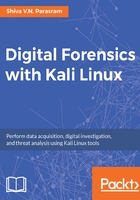
Online and offline anonymity
Encryption, in particular, can make investigations rather difficult, but there is also the concept of anonymity which adds to the complexity of maintaining an accuracy of the true sources found in investigations. Like encryption, there exist several free and open source tools for all operating system platforms, such as Windows, Mac, Linux, and Android, which attempt and most often successfully mask the hiding of someone's digital footprint. This digital footprint usually identifies a device by its IP address and MAC (Media Access Control) address. Without going into the network aspect of things, these two digital addresses can be compared to a person's full name and home address, respectively.
Even though a person's IP address can change according to their private network (home and work) and public network (internet) access, the MAC address remains the same. However, various tools are also freely available to spoof or fake one's IP and MAC addresses for the purpose of privacy and anonymity. Adding to that, users can use a system of routing their data through online servers and devices to make the tracing of the source of the sent data quite difficult. This system is referred to as proxy chaining and does keep some of the user's identity hidden.
A good example of this would be the Tor browser; it uses onion routing and several proxies worldwide to route or passes the data along from proxy to proxy, making the tracing of the source very difficult, but not impossible. You can think of proxy chains as a relay race, but instead of having four people, one passing the baton to the next, the data is passed between hundreds of proxy devices, worldwide.